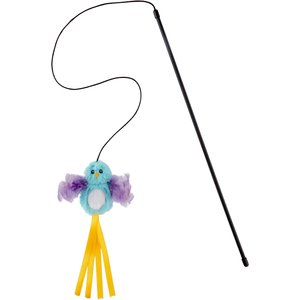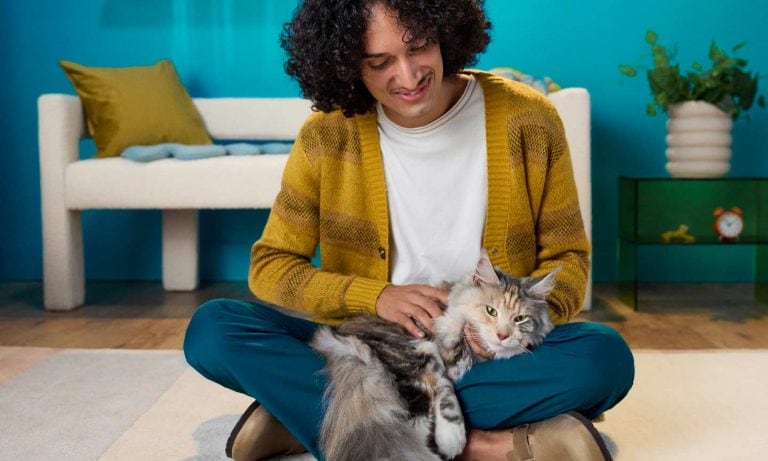Whether you’re a cat parent or simply have an affinity for your friends’ pets, you’ve probably faced the challenge of winning over a reticent feline. Odds are, it’s not you personally that the cat has a problem with—it’s your behavior.
“A lot of the time, the reasons for a cat’s behavior are what people do or don’t do,” says Marilyn Krieger, certified cat behavior consultant at The Cat Coach.
With the help of cat behavior experts, we’ve compiled a list of tips to help you make your cat like you. Follow this advice, and you’ll have cats eating out of the palm of your hand in no time—literally and figuratively.
In This Guide:
1. Watch Your Body Language
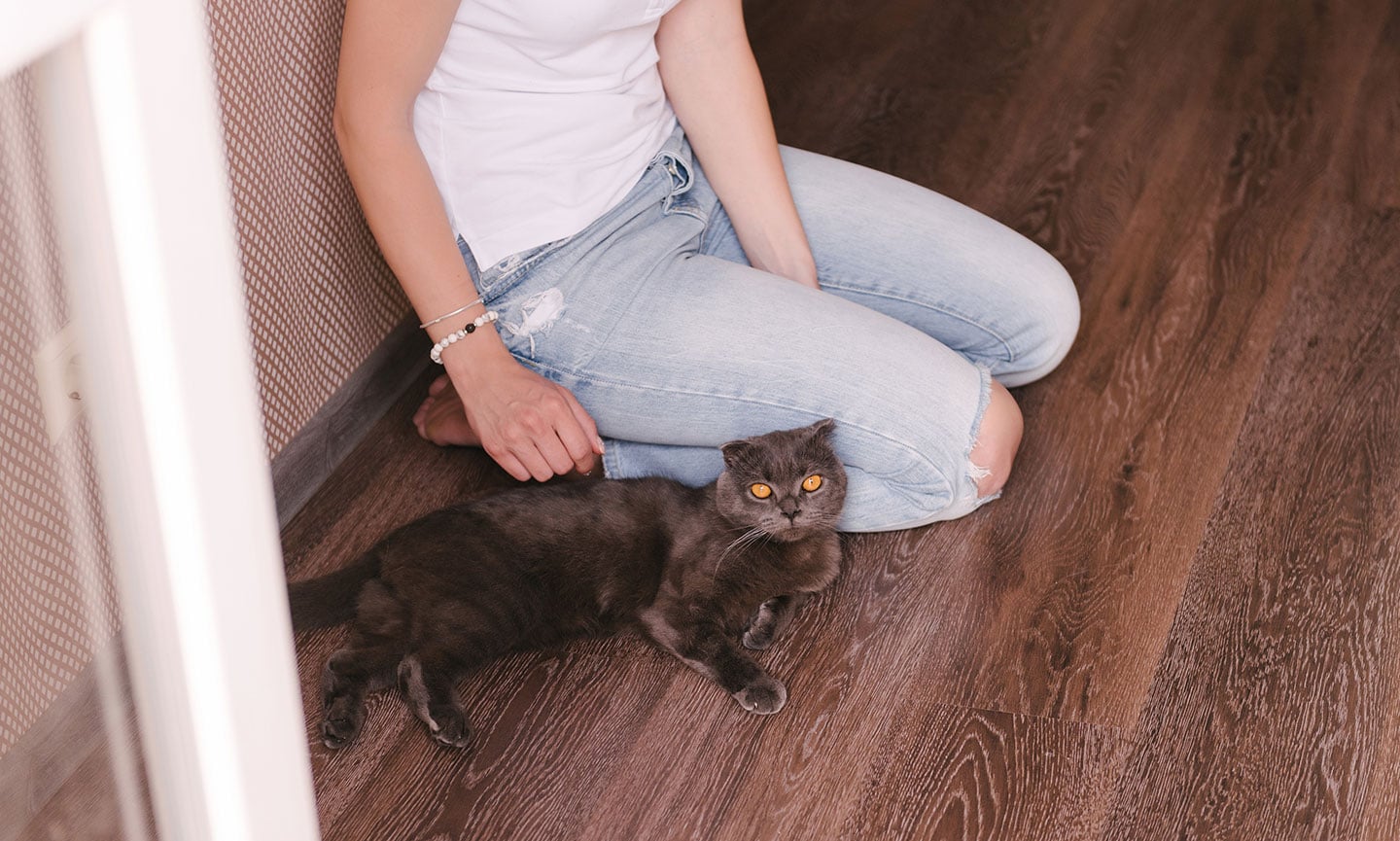
If a cat feels fear, they’re more likely to hide or avoid you. So, in order to make a cat like you, it’s important to make them feel comfortable.
“Cats are tiny little things compared to people,” Krieger says, “so it’s very important that they feel safe and secure.”
Try this:
- Crouch down so you appear smaller (and less intimidating).
- Do not make direct eye contact, which “can be considered intimidating or even aggressive,” says Marci Koski, Ph.D., a certified feline behavior and training professional at Feline Behavior Solutions in Vancouver, Washington, and Portland, Oregon.
- Do not directly position your body or attention toward them.
Basically, play hard to get. “They’ll get to you in their own time,” Dr. Koski says.
2. Let the Cat Approach You
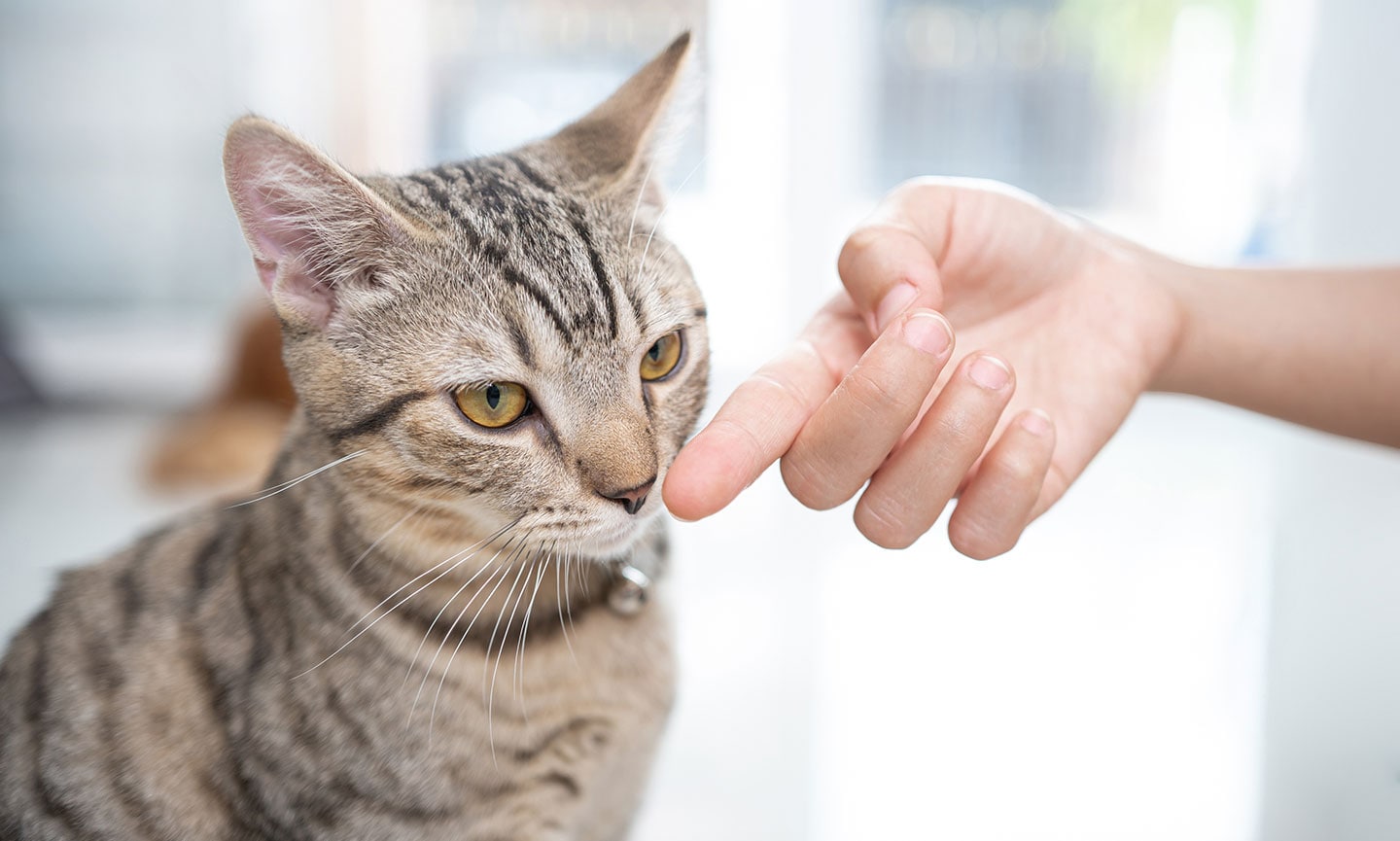
Cats can be irresistibly adorable. But as much as you may want to greet Snowball with a big ol’ hug and snuggle, don’t.
“This is a common mistake for people who love cats,” Krieger says. “They’ll go up to the cat and corner the cat, try to pet the cat, and try to win over the cat.”
In this situation, she explains, your advances will either be ignored or cause the cat to bolt.
Instead of making a beeline for the cat, encourage the feline to come toward you, says Krieger. What does that look like exactly?
- Crouch down or sit on the floor.
- Extend your index finger toward the cat.
- Let the cat sniff you.
From there, you can begin to pet or scratch the cat’s head―but take it slow.
“Make friends at the pace of the cat,” Dr. Koski says. “If they walk away, let them go.”
The key is to let the cat set the tone of the interaction, and to give them space to relax.
3. Observe the Cat’s Likes and Dislikes
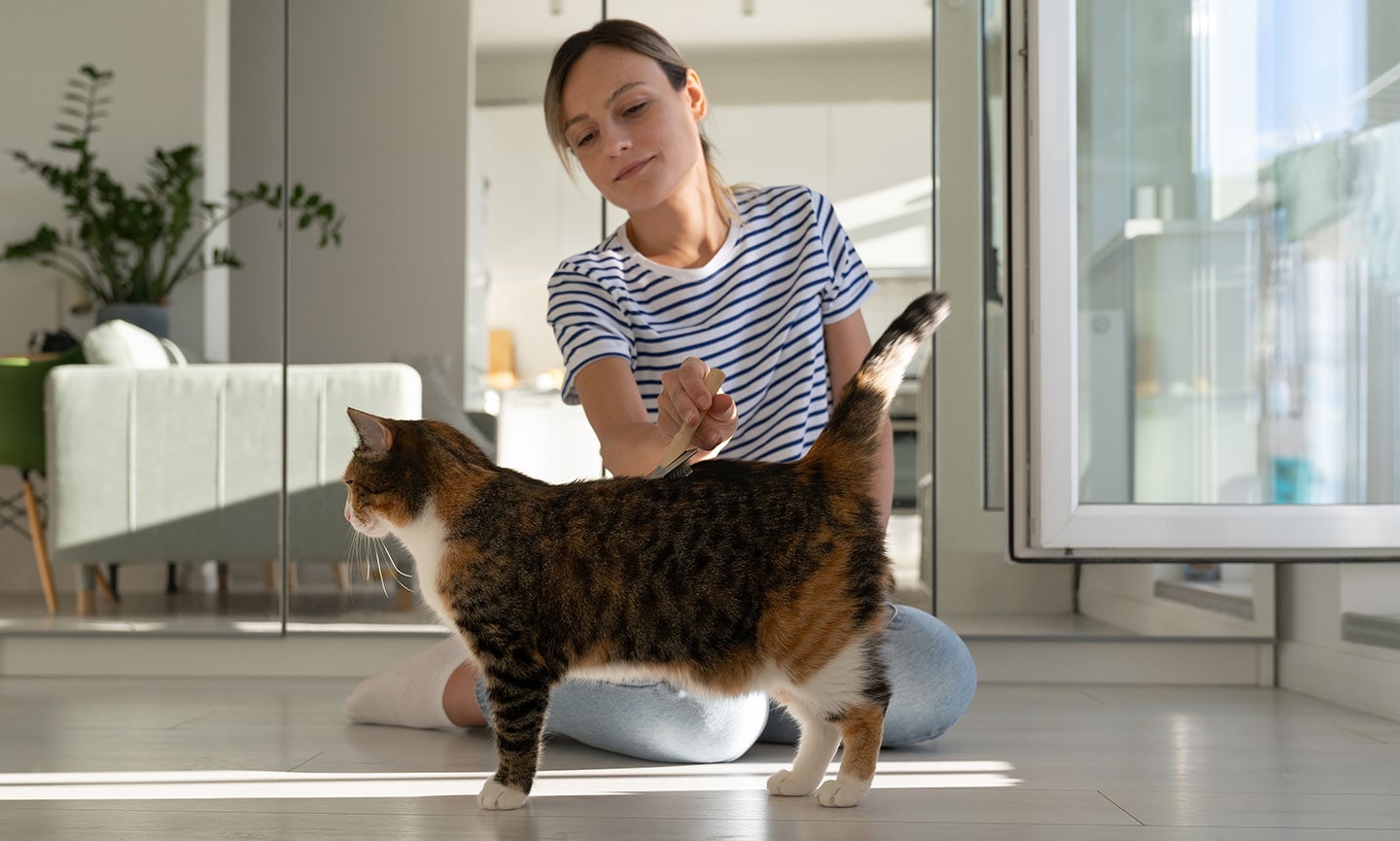
Just like people, different cats have vastly different personalities and preferences.
If you’re meeting a friend’s or significant other’s cat, you can ask questions; if you’re adopting a new cat, you’ll have to take the time to observe the cat’s behaviors and get a feel for what they do and do not enjoy.
“If the cat likes to be brushed, then you can brush the cat,” Krieger suggests. “Whatever it is, then that’s what you can do to encourage the cat to come forward.”
Dr. Koski offers a tip for simple petting: “Most cats enjoy being rubbed on the forehead, neck, cheeks, and around the ears,” she says, “so stick to these areas with a new cat.”
4. Keep Calm and Stay Positive
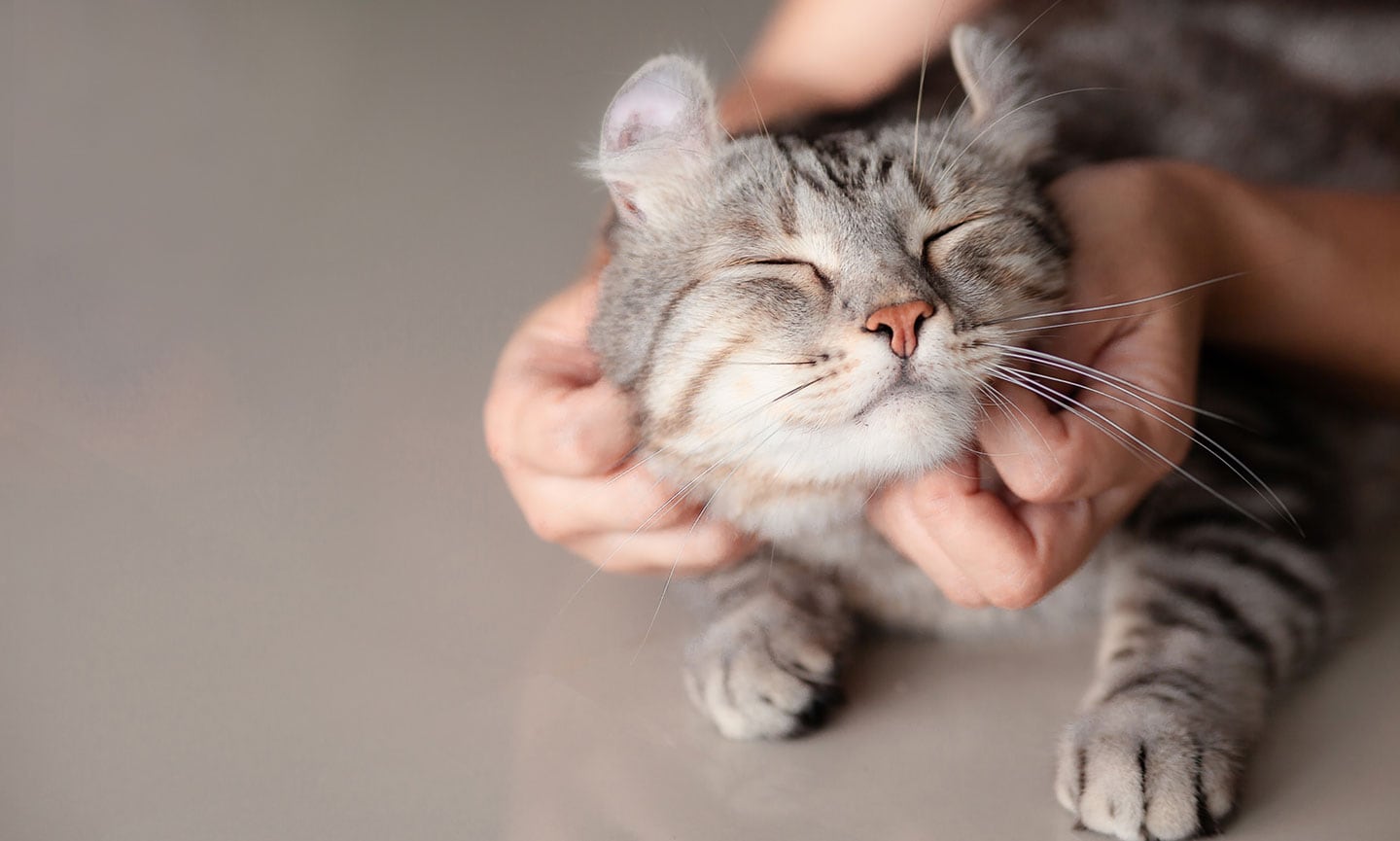
If you’re a “dog person,” you may be used to interacting with pets in a jumpy, excited manner. But according to our experts, that kind of behavior tends to send cats running.
Don’t make any sudden movements, gestures, or sounds, says Dr. Koski. “The more predictable you can be in your actions, the more trusting the kitty will be of you,” she says.
In addition to staying cool as a cucumber, Krieger advises engaging in behaviors that cats can associate with positive results. That could mean rewarding them with catnip, a toy, or a treat. Krieger recommends giving the cat a bite of food or a treat in greeting and making a habit of using the cat’s name.
“Make everything positive, so everything good happens around you,” she says.
5. Use Treats Strategically
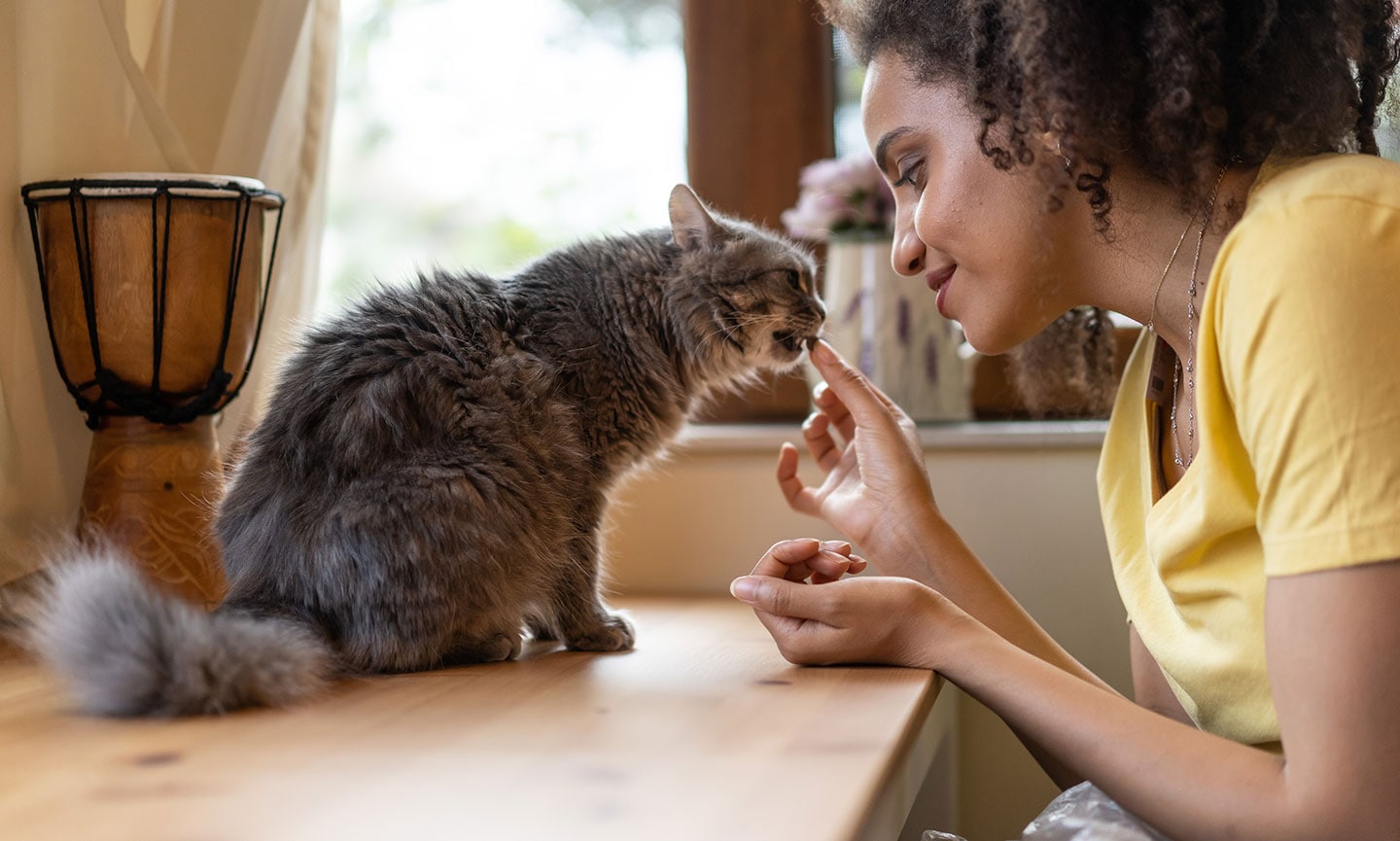
This one’s pretty straightforward—give a cat a tasty morsel and they’ll be more likely to warm up to you.
However, this doesn’t mean showering the cat with treats all day long. Dr. Koski recommends using cat treats strategically, “to either reward good social interactions with you or to entice a shyer cat to move toward you and get to know you better.”
Keep in mind that not all cats have the same tastes—if you want to build a lasting friendship, it’s best to do your research.
“Some cats are not very food-motivated, so you might have to search for a treat that they like,” Dr. Koski explains. To start, she suggests cooked, plain chicken breast, a little nugget of stinky cheese, or tuna flakes.
6. Be Playful—but Know When To Stop
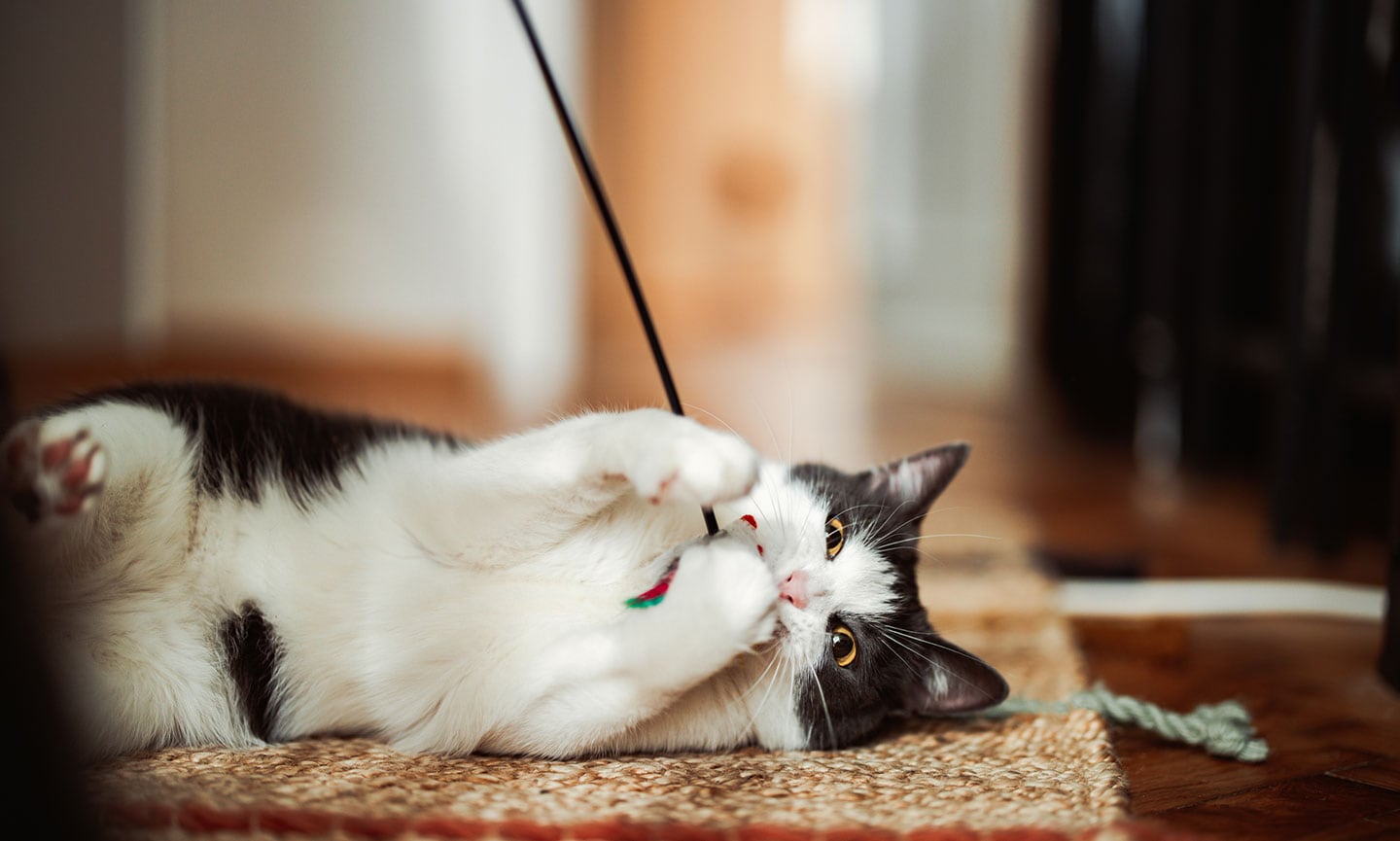
Once you’ve slowly and calmly introduced yourself to a cat, they may be up for some playtime.
Be mindful of the cat’s body language, and confer with the cat’s parent (if that’s not you), before attempting to engage.
Has the cat approached you and allowed you to touch them? Are they displaying signs of comfort, such as purring or kneading? If so, then they may be interested in playing.
“A short play session can be a good way to bond,” Dr. Koski says. “Grab a wand toy, move it like a snake or bird or mouse, and give the cat an opportunity to let her guard down.”
Krieger recommends wand toys, ball-and-track toys, and puzzle feeders—all of which are mentally stimulating for cats.
When playing with a cat for the first time, remember to give them personal space, and don’t force the interaction.
“Keep playtime short,” Dr. Koski recommends. “They’ll come to you if they want more!”
7. Create a Feline-Friendly Environment
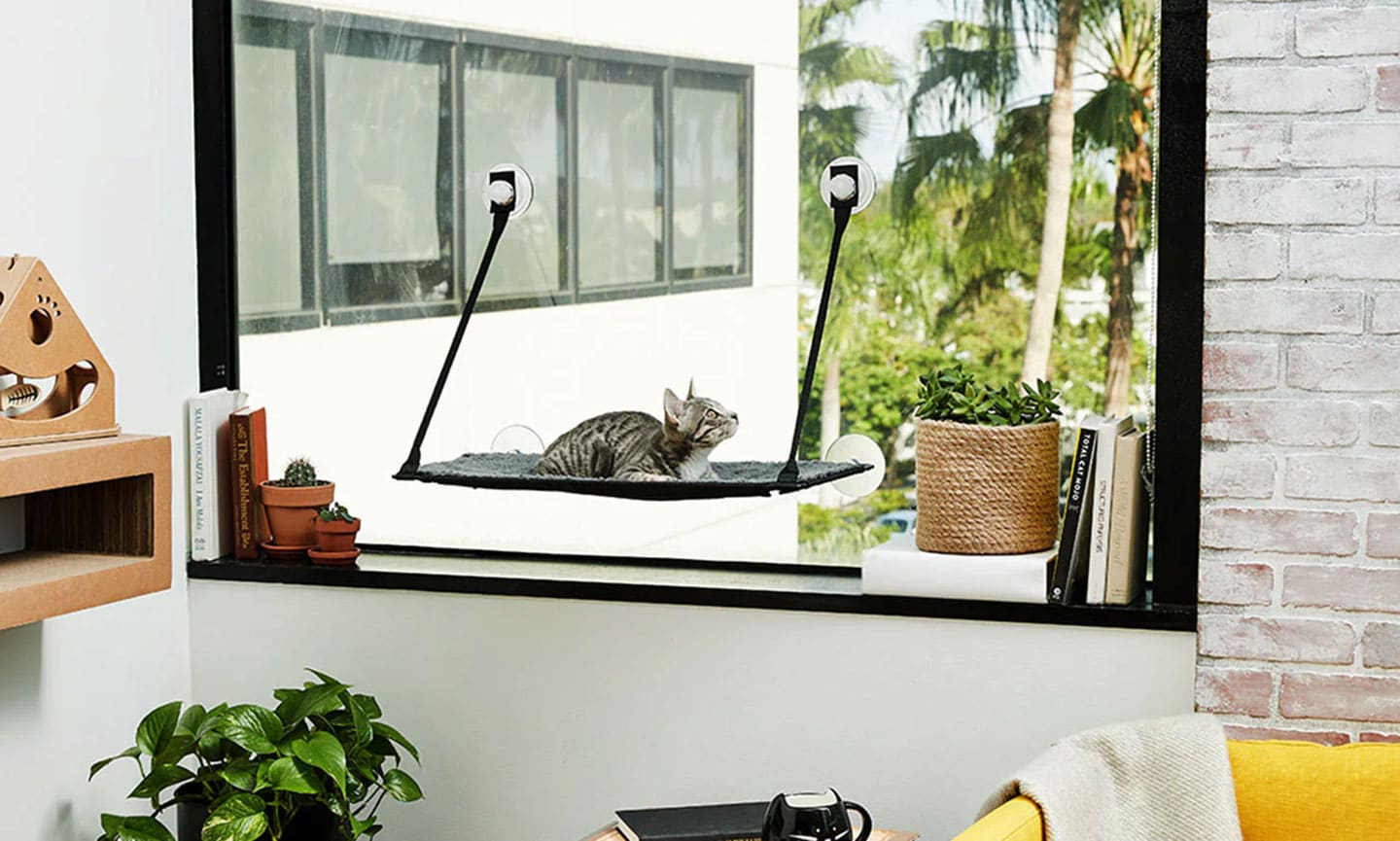
If you want to foster a positive relationship with your pet, it’s important to create a feline-friendly home where your cat loves to relax and bond.
“Think like a cat,” says Stephen Quandt, a certified cat behaviorist in at Feline Behavior Associates in New York City. “Be the ‘mom cat’ and give your cat what they want and need.”
Quandt suggests making sure your home has the following kitty amenities:
- Scratching posts and pads: Scratching is a natural and necessary behavior for cats, so be sure to provide fun, scratch-friendly surfaces.
- Cat trees: Instinctually, cats feel safe and cozy in high spaces, where they can keep a lookout for predators (even when the only “predator” in the home is a vacuum cleaner).
- Cat toys: Provide your cat with plenty of enriching, interactive toys, as well as daily play sessions.
- Puzzle feeders: Treat-dispensing toys provide cats with valuable mental enrichment. “Cats need to problem-solve in order to get food in nature, so give your cat problem-solving activities,” says Quandt.
- Routine: Predictable routines set your cat up for success. “Routine helps cats feel calm, so give them scheduled activities,” says Quandt. “Then they don’t have to pester you or meow incessantly.”
How To Tell if a Cat Likes You
Unlike humans, our feline friends can’t offer kind words or send thoughtful texts—but there are plenty of telltale signs that they love you, if you know how to speak “cat.”
“We all want our cats to like us,” says Quandt. “What can be challenging is interpreting their signals accurately. We tend to anthropomorphize [them] by assigning human emotions to our animals, and they are not humans. They are sentient, feeling creatures who evolved in their own ways for their own purposes that initially had no connection to us.”
Therefore, it’s our job as pet parents to learn about a cat’s nature and pay close attention to their expressions. That gives us a better chance to interpret them correctly and provide what they want and need.
The following body language and behaviors suggest you have a feline admirer:
- Greeting you with meows and purrs
- Rubbing up against your legs
- Head butting and nudging, a common sign of affection
- Long, slow blinking, signaling a calm state
- Resting with an exposed abdomen, inviting belly rubs
- Spending time near you
What About Befriending Homeless Cats?
It can be tempting to interact with outdoor cats. However, unfamiliar outdoor cats should never be handled.
“Do not attempt to pet the cat or pick the cat up,” cautions Sarah Wooten, DVM, a Colorado-based veterinarian.
Stray cats are unlikely to have up-to-date vaccinations, and a bite could be a rabies risk. Feral cats—meaning cats that have never been pets, and are more akin to wild animals—are especially likely to bite or scratch, and are stressed by human contact.
The good news: You don’t have to physically touch a feral cat to make an impact on their life. There are a number of ways to safely, humanely, and effectively improve the lives of homeless animals.
FAQs About How To Get a Cat To Like You
Q: How do you get a cat to trust you?
A:To get a cat to trust you, start by being patient and letting them initiate interactions. Respect their space and speak softly. Never chase them or pick them up against their will. Forcing a cat to do something they don’t want to do will break their trust and could lead to fear or avoidance.
Q:How do you make cats more attracted to you?
A:You can use treats and toys to attract a cat to you. Speaking quietly and moving slowly can help put them at ease.
Maura McAndrew contributed to this article.
Share:



